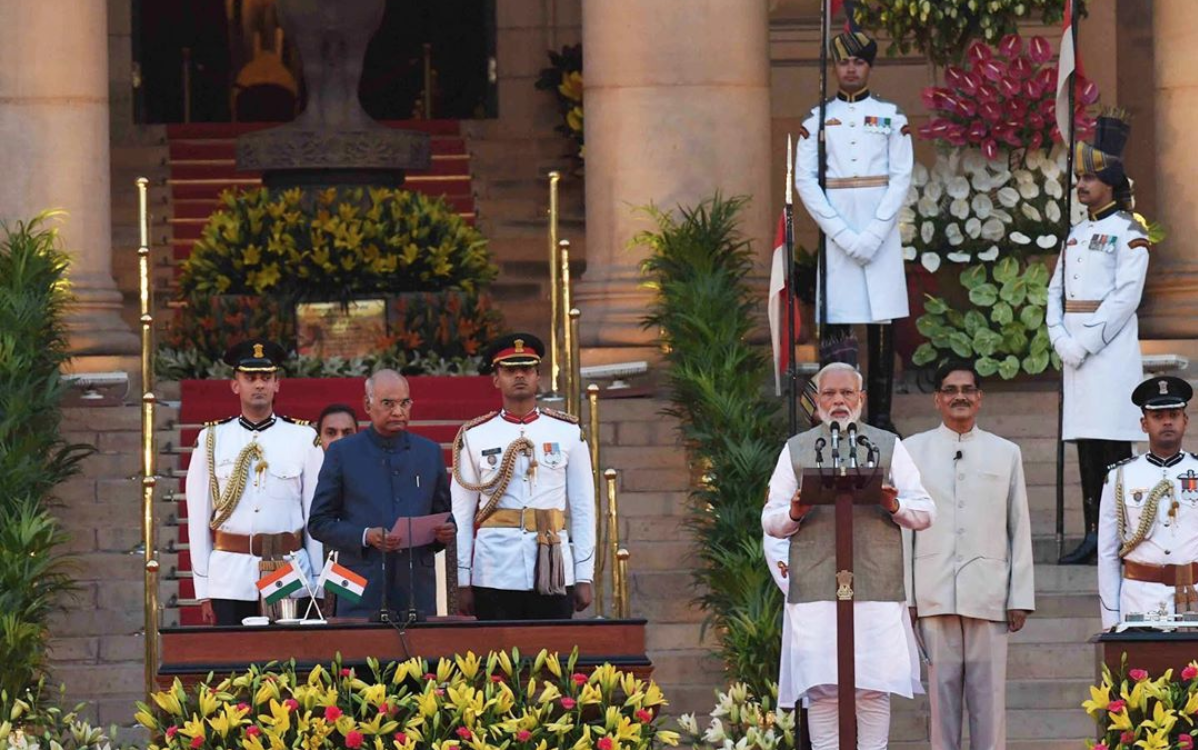Among the VIPs at Indian Prime Minister Narendra Modi’s swearing-in for a second term May 30 were the leaders of the Bay of Bengal Initiative for Multi-Sectoral Technical and Economic Cooperation (BIMSTEC). The organization, which comprises Bangladesh, Bhutan, India, Myanmar, Nepal, Sri Lanka, and Thailand, is intended to be a bridge between South Asia and Southeast Asia. Looking beyond the South Asian Association for Regional Cooperation (SAARC) and engaging with BIMSTEC has been a cornerstone of India’s policy shift under Modi.
The two Southeast Asian countries in BIMSTEC, Myanmar and Thailand, have a crucial place in India’s ambitious connectivity plans for its northeastern region. An Asian highway linking India, Myanmar, and Thailand is the centerpiece of the government’s Act East (formerly Look East) policy. With India-Pakistan bickering persisting and affecting SAARC, BIMSTEC is poised to step in and advance India’s regional cooperation.
Modi’s invitation to BIMSTEC leaders was a bid to reach out to neighbors. Beyond geopolitics, what does this outreach mean from an economic standpoint, specifically from the perspective of trade? Export promotion is a focal strategy for the Modi government, the downturn in exports in recent quarters notwithstanding. Former Commerce Minister Suresh Prabhu emphasized strategic regional partnerships, where BIMSTEC also figured. In 2016, the bloc’s total trade stood at $1.1 trillion; India’s share was a mere 2.4%. With a GDP at least five times larger than that of Thailand (which has the second-largest GDP in the group), India has not capitalized on the BIMSTEC market.
Looking only at the agriculture sector, where new export markets are the need of the hour, could BIMSTEC be the answer? In 2016, agricultural trade comprised 15% of the bloc’s total trade. Free trade in agricultural commodities ensures availability, accessibility, and stability of food supplies, which can address chronic hunger and malnutrition in the BIMSTEC countries. Given geographical proximity and the failure of domestic agricultural markets, enhancing agricultural trade should be a priority.
In addition to trade, another important marker for the success of regional arrangements is resilience, the capacity to withstand shocks. Resilience can be measured by how a country responds to national, regional, or global shocks. After the food price crisis of 2007-08, the intra-regional trade of ASEAN, BIMSTEC and SAARC decreased sharply. While trade between BIMSTEC countries shrank by 24%, intra-SAARC trade fell by as much as 31%. Interestingly, during the post-crisis recovery period from 2009 to 2011, SAARC agricultural trade increased by 83%, while BIMSTEC increased by 108%, although SAARC had already established a free trade area. This indicates the untapped potential in agricultural trade among BIMSTEC countries.
To highlight the trade performance among BIMSTEC countries, we present results from a forthcoming IFPRI study of the assessment of ASEAN-SAARC agricultural trade relationship, which derives the trade potential based on empirical models of trade. It assesses trade performance relative to the estimated benchmarks to determine under-trading, over-trading or normal trading. The analysis reveals that India over-exports around 56% and 14% to Bhutan and Nepal, respectively. Myanmar, which mostly exports dried legumes and beans to India, also over-exports around 4% to India. Bangladesh and Thailand on the other hand under-export to India (around 0.4% and 1%, respectively). Bhutan greatly over-exports to India; its exports are more than 30 times what they should be given Bhutan’s economic fundamentals.
Since trade with important BIMSTEC partners is lower than it could potentially be, India could benefit from a Free Trade Agreement (FTA) with the group. In this regard, there are lessons to learn from China in terms of its alacrity in forging trade alliances. Also, the experience of SAARC should be a reminder of the effects of doing too little, too late. China implemented the ASEAN-China Free Trade Agreement (ACFTA) in 2005 after entering into the framework agreement in 2002, i.e., within just 3 years. India also concluded the framework agreement in 2003, but the ASEAN-India FTA was realized only in 2010. Such slow progress creates deficits of trust and sub-par returns from these partnerships, the sort of afflictions that aligning with BIMSTEC was meant to overcome in the first place.
As the India-BIMSTEC friendship moves forward, ASEAN also offers some lessons. Pacts such as the ASEAN Comprehensive Investment Agreement (ACIA), entered into force on March 29, 2012, aim to facilitate greater flow of financial capital and intra-regional long-term investment between ASEAN member countries. Inward intra-FDI flows among ASEAN countries was around $6.5 billion in 2006; they increased to $24 billion in 2016. If BIMSTEC is to deliver for India, India must conclude agreements expeditiously. India has often missed the bus in trading and investment. It should work to avoid meeting the fate of SAARC and/or being swamped by the Chinese juggernaut.
Sharing land and maritime borders with BIMSTEC countries, India should expedite growth in connectivity (through road, rail, maritime and air) within BIMSTEC. For example, it should develop well-connected quality ports such as a deep-sea container terminal in Sri Lanka, in addition to the India-Myanmar-Thailand Trilateral Highway.
Simultaneously, focusing on trade facilitation measures such as simplification and harmonization of trade procedures, setting regional single windows for custom clearance, recognition of custom transit documents, and proper coordination between border authorities will facilitate expansion of trade in BIMSTEC. With 22% of world’s population and a GDP of $2.5 trillion, BIMSTEC can become one of the world’s strongest political and economic unions.
Manmeet Ajmani is an IFPRI Senior Research Assistant; Vishruta Choudhary is an IFPRI Research Analyst; Devesh Roy is a Senior Research Fellow with the CGIAR Research Program on Agriculture for Nutrition and Health (A4NH). They are based in IFPRI’s South Asia Office in New Delhi. This post first appeared in the Business Standard.







